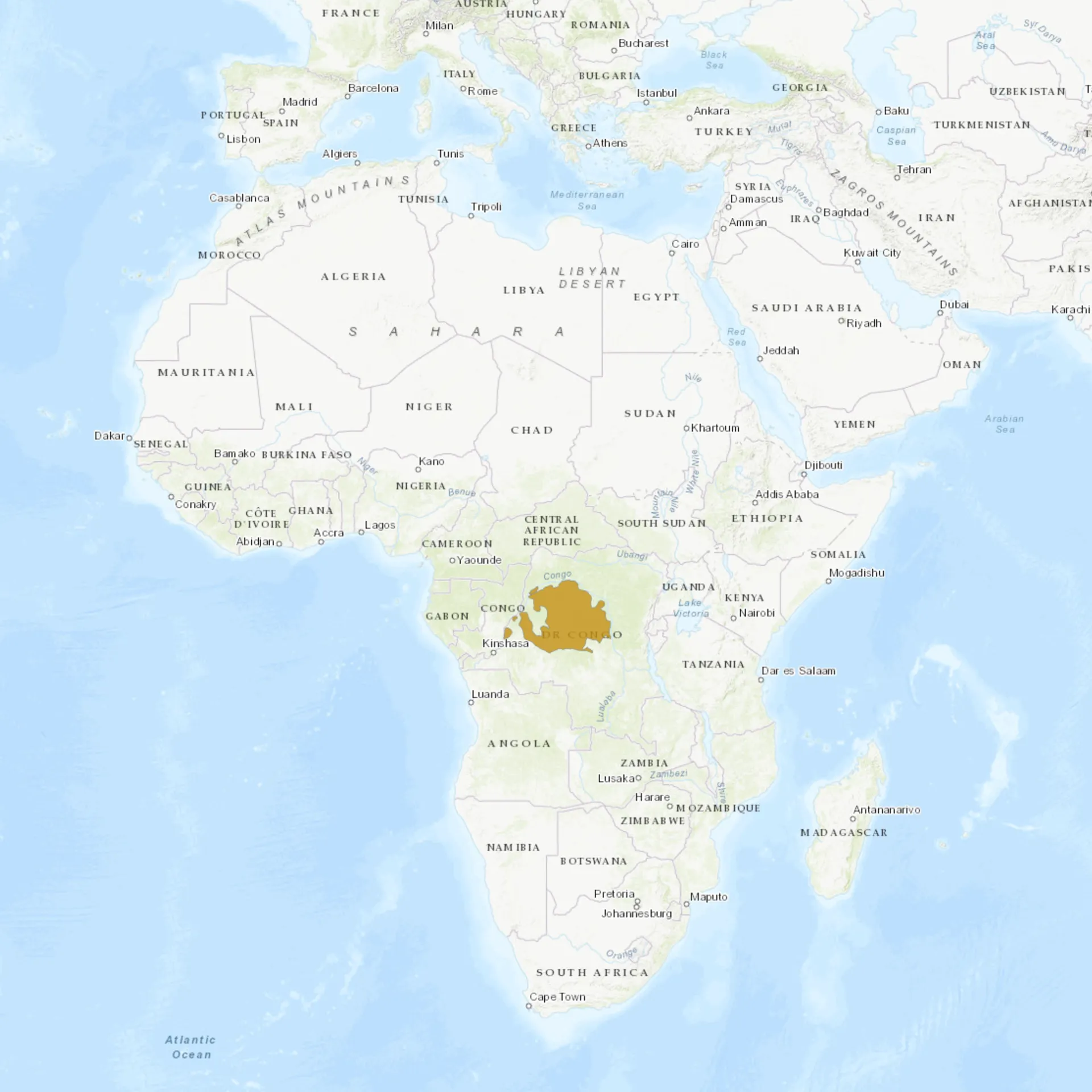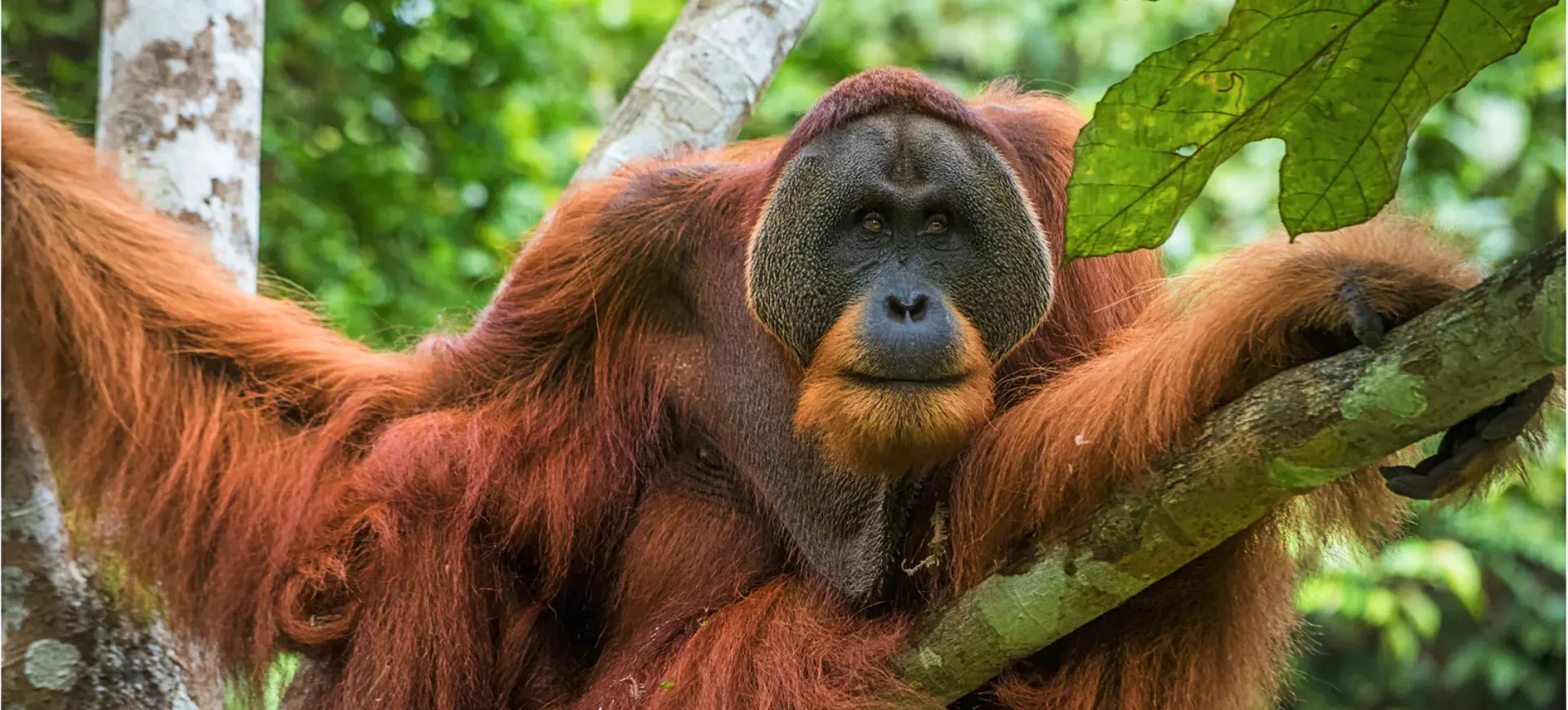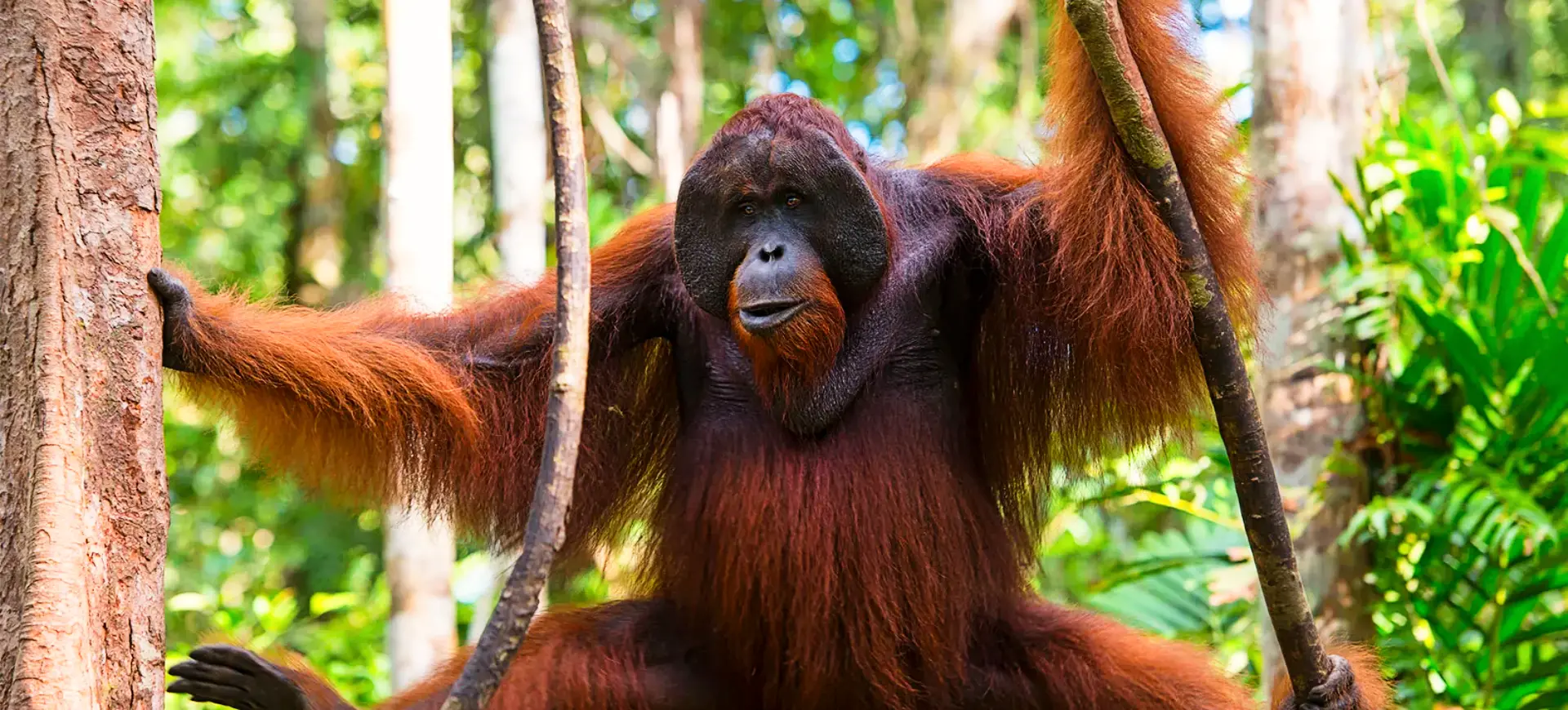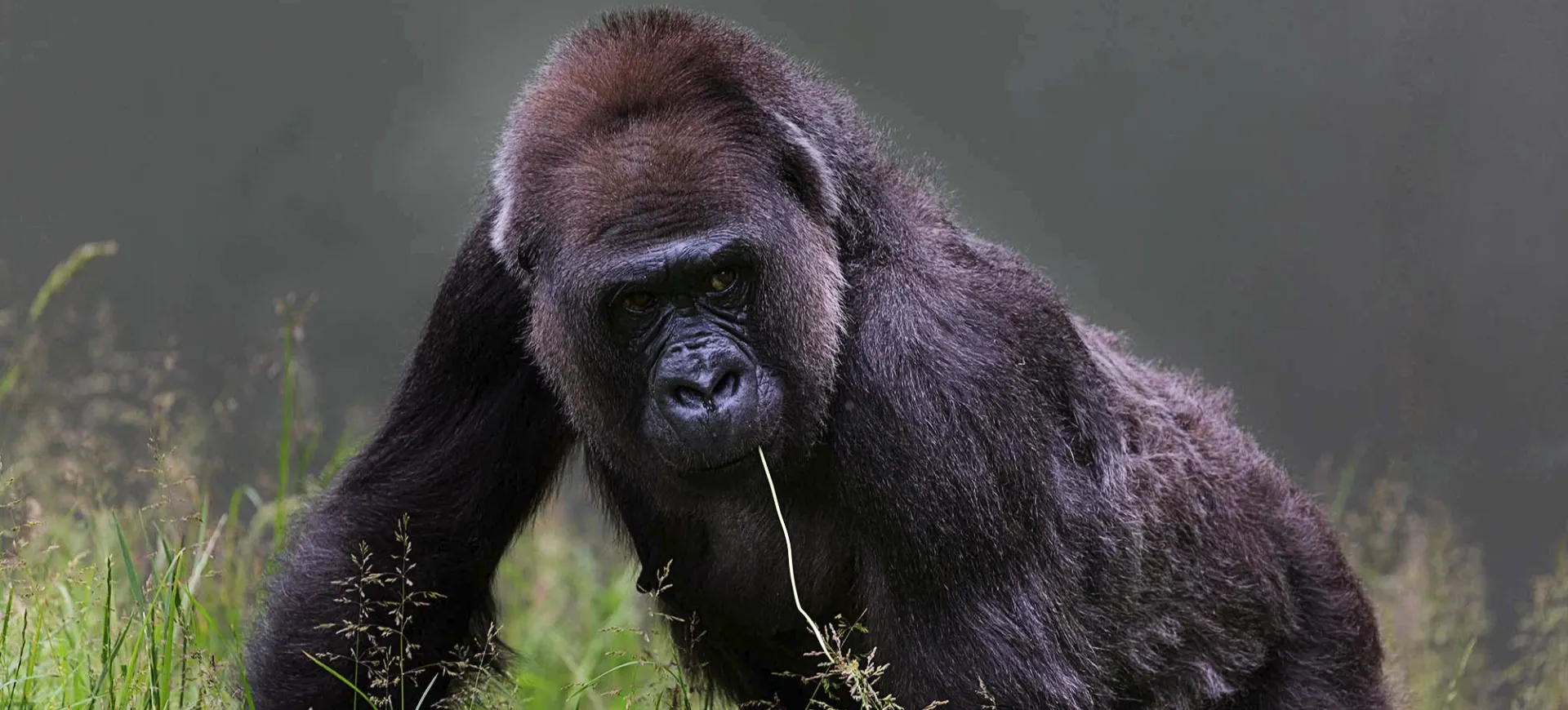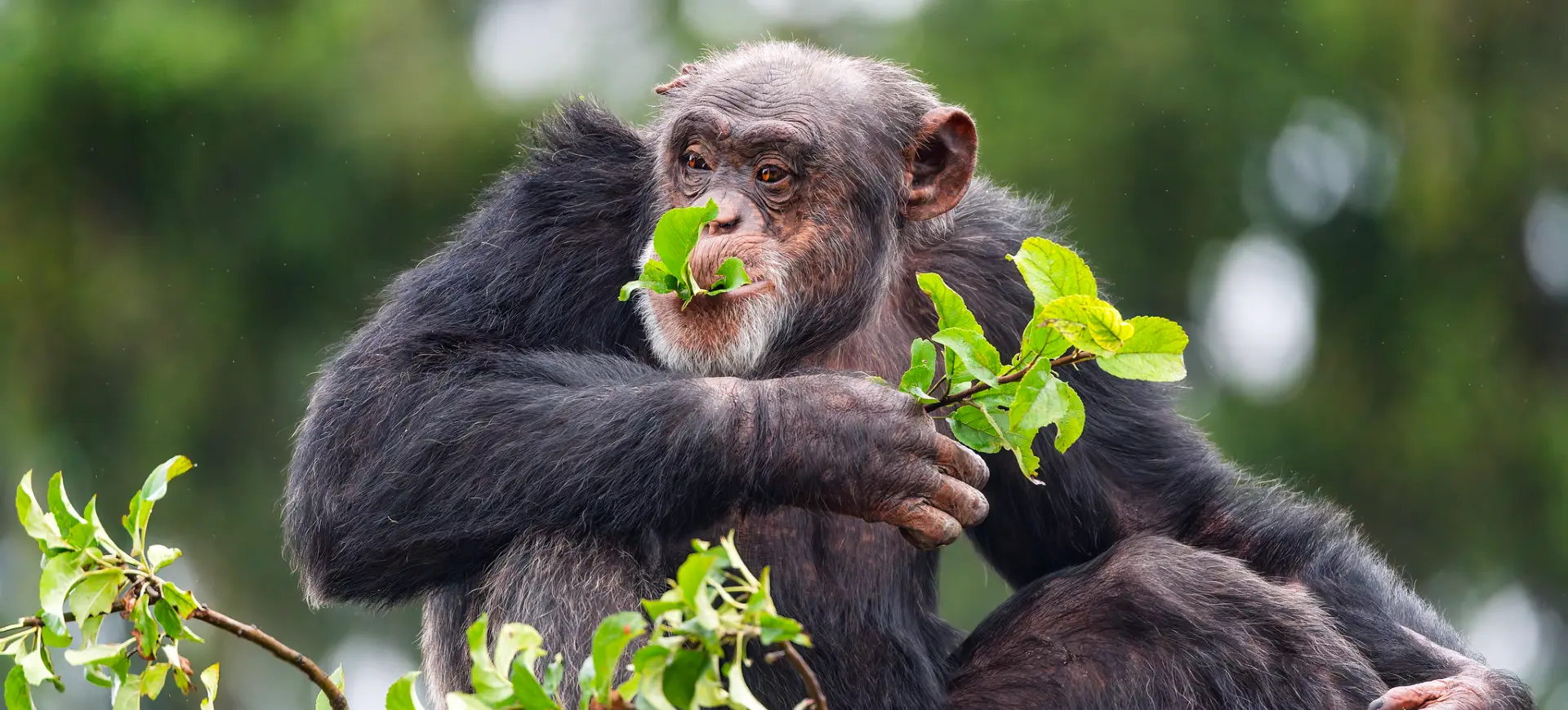Overview
Bonobos, officially named Pan paniscus, are one of the two species constituting the Pan genus, the other being the common chimpanzee (Pan troglodytes). Despite a few distinct features, they share a striking physical resemblance with their chimpanzee counterparts. Bonobos are typically leaner and possess darker faces, giving them a unique physical presence within the genus. Their slender physique and longer limbs imbue them with an elegance that sets them apart from the bulkier chimpanzees.
Their behavioral traits, however, mark a more profound divergence from common chimpanzees. Bonobos are known for their remarkably peaceful behavior. Conflicts within groups are often resolved not by aggression but through social interactions and sexual behaviors, a trait central to their characterization as the ‘make love, not war’ primate.
The social structure of Bonobos further differentiates them from their cousins. Unlike the common chimpanzees, which have male-dominant societies, Bonobo communities are matriarchal and egalitarian. In these groups, females often assume leadership roles, establishing an equilibrium ensuring all members, regardless of sex or age, enjoy equitable access to resources. This social arrangement has fascinated scientists for decades and provides valuable insights into primate behavior.
Current distribution:
Bonobos are endemic to the Democratic Republic of the Congo, confined to the forests south of the Congo River. Their range spans an area of approximately 200,000 square kilometers, but their distribution is highly fragmented due to habitat destruction. The largest populations are in Salonga National Park and other protected reserves, though significant portions of their habitat remain unprotected. Because of political instability and human activity, their exact population distribution remains difficult to assess.
Human encroachment, logging, and agricultural expansion continue to shrink their forest habitat, leading to isolated populations. Poaching, often driven by the illegal bushmeat trade, poses a serious threat to bonobo survival. Conservation efforts, including habitat protection and anti-poaching initiatives, aim to stabilize their population. However, bonobos remain among the most endangered great apes due to their limited range and ongoing threats.
Physical Description:
Bonobos, while physically resembling their counterparts, the common chimpanzees, carry distinctive traits that set them apart. They boast a more slender build, augmented by longer limbs, which aid their arboreal lifestyle. Their bodies are covered in black hair, complementing their dark facial features. However, their pink lips stand out, contrasting their otherwise dark coloration. Adult bonobos generally fall within a weight range of 68-86 lbs (31-39 kg), striking a balance between robustness and agility.
Their mode of locomotion is primarily quadrupedal, often resorting to ‘knuckle-walking,’ a characteristic trait shared with common chimpanzees. Despite this, bonobos demonstrate an impressive ability for bipedal locomotion, standing and walking on two legs when needed. This behavior can be observed during certain activities, such as foraging or navigating swampy environments. Interestingly, sexual dimorphism is present in bonobos, with males slightly larger than females, an attribute that subtly influences their social dynamics.

Lifespan: Wild: ~40 Years || Captivity: ~50 Years

Weight: Male: 75–132 lbs (34–60 kg) || Female: 66–97 lbs (30–44 kg)

Length: Male: 28–33 in (71–84 cm) || Female: 26–31 in (66–79 cm)

Height: Male: 34–39 in (86–99 cm) || Female: 28–35 in (71–89 cm)

Top Speed: 25 mph (40 km/h)
Characteristic:
Native Habitat:
Bonobos are endemic to the Democratic Republic of Congo (DRC), inhabiting the heart of the Congo Basin – the second-largest rainforest in the world. They thrive in primary and secondary forests, including lowland rainforests, swamp forests, and, to a lesser extent, grassland areas. The Congo River forms a natural barrier to their distribution, separating them from the habitats of their closest relatives, the common chimpanzees.
These forests provide a rich, biodiverse environment offering ample food and shelter for bonobos. Their habitats have a hot and humid climate with heavy yearly rainfall. The tree-dense environments allow bonobos to lead semi-arboreal lives, spending a significant amount of their time in the forest canopy foraging, playing, and sleeping.
Climate Zones:
Biomes:
WWF Biomes:
Biogeographical Realms:
Continents:
Countries:
Diet:
Diet & Feeding Habits:
Bonobos display an omnivorous diet, exhibiting a preference for fruits which constitute a significant portion of their food intake. This variety of fruits provides them with essential vitamins and nutrients necessary for their health. Supplementing their fruit-rich diet, bonobos also have an appetite for other plant-based food items. They consume various leaves, flowers, bark, stems, and roots, contributing to their diverse dietary habits. This consumption of various vegetation not only helps fulfill their nutritional needs but also aids in maintaining the health and vitality of their habitats.
While they spend much of their day foraging in the tree canopy, reaping the rewards of this abundant food source, bonobos are also comfortable descending to the ground in search of nourishment. Insects, worms, and small vertebrates become crucial protein sources for these primates. Such a varied diet, accessible from multiple layers of their habitat, ensures that bonobos have a well-rounded nutritional intake, equipping them with the energy and nutrients they need for their active lifestyles.
Mating Behavior:
Mating Description:
Bonobos represent a unique paradigm in the animal kingdom where sexual activity transcends the singular purpose of reproduction and becomes a cornerstone of their social interactions. Mating among bonobos isn’t strictly confined to specific periods or fertility cycles; rather, it is a year-round occurrence often performed in face-to-face positions, a trait rarely observed in other animals. Female bonobos demonstrate a monthly estrous cycle mirroring human females, signifying their readiness to mate and conceive.
However, the sexual behavior in bonobos extends beyond conventional mating patterns. Intriguingly, female bonobos engage in sexual activities outside their fertile periods, implying a role of sex beyond reproduction. Same-sex couplings, particularly amongst females, are common, pointing to sex as a tool for social bonding, conflict resolution, or dominance establishment. These practices underscore the complex and multi-faceted role of sexuality in bonobo societies.
Reproduction Season:
Birth Type:
Pregnancy Duration:
Female Name:
Male Name:
Baby Name:
Social Structure Description:
Bonobos are known for their large, cohesive social structures, typically comprising 30 to over 100 individuals. These communities are a study in social dynamism, characterized by the phenomenon of fission-fusion societies. Rather than remaining as one solid group throughout the day, bonobo communities exhibit a fluid organization where members split into smaller subgroups or parties during the daytime hours for foraging. This division into foraging parties ensures efficient resource utilization and minimizes competition within the community.
Despite their large overall community size, the composition of these smaller subgroups is not constant and can shift quite frequently. Bonobos are not tied to a particular subgroup, allowing them to navigate different subsets within the broader community. This fluidity in social interaction enriches their social life, allowing them to maintain robust social bonds, facilitate cooperative behaviors, and negotiate their position within the community hierarchy.
Groups:
Conservation Status:
Population Trend:
Bonobos are believed to have a wild population of between 15,000 and 20,000 individuals, although precise numbers are challenging to ascertain due to the inaccessibility of much of their habitat. Populations are concentrated in the Democratic Republic of Congo’s central region, facing ongoing habitat loss and hunting threats. In captivity, the worldwide bonobo population is approximately 500, housed primarily in zoos and research facilities for conservation and study purposes.
Despite their relatively small population, bonobos exhibit a high level of genetic diversity. However, their populations are severely fragmented, with significant portions isolated due to deforestation and human encroachment. This fragmentation limits gene flow between populations, potentially leading to a decrease in genetic diversity over time.
Population Threats:
The major threats to bonobos include habitat loss and hunting. As human populations expand in the Democratic Republic of Congo, bonobo habitats are being destroyed for agricultural expansion, logging, and human settlements. Hunting also poses a significant threat to bonobos for bushmeat and the illegal pet trade.
In addition to these direct threats, bonobos are indirectly impacted by the region’s civil unrest and political instability. Conservation efforts are hampered by these conditions, making it difficult to enact and enforce protective measures. Furthermore, diseases transmitted from humans to bonobos also threaten their populations.
Conservation Efforts:
Numerous conservation efforts are underway to protect bonobos. Key among these is the work of the Bonobo Conservation Initiative (BCI), which works with local communities, governments, and international partners to protect bonobo habitats and promote sustainable livelihoods. Efforts include establishing and managing protected areas, raising awareness, and promoting research.
In addition, the World Wildlife Fund (WWF) and the African Wildlife Foundation (AWF) are involved in efforts to protect bonobos and their habitats. Zoos and research institutions worldwide also participate in bonobo conservation through captive breeding programs, research, and public education.
Additional Resources:
Fun Facts
- Bonobos share 98.7% of their DNA with humans.
- They can walk upright on two legs, a trait known as bipedalism.
- Bonobos are known for their peaceful societies and matriarchal structures.
- They use sexual activity for various social reasons, not just reproduction.
- Bonobos communicate through complex vocalizations, gestures, and facial expressions.
- They are capable of using tools to access food.
- Bonobos are only found in the wild in one country – the Democratic Republic of Congo.
- They can live up to 50 years in captivity.
- Bonobos have been observed sharing food, a sign of their cooperative nature.
- Female bonobos form strong alliances, often banding together to control food resources and social dynamics.


